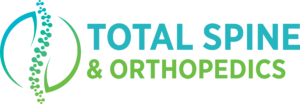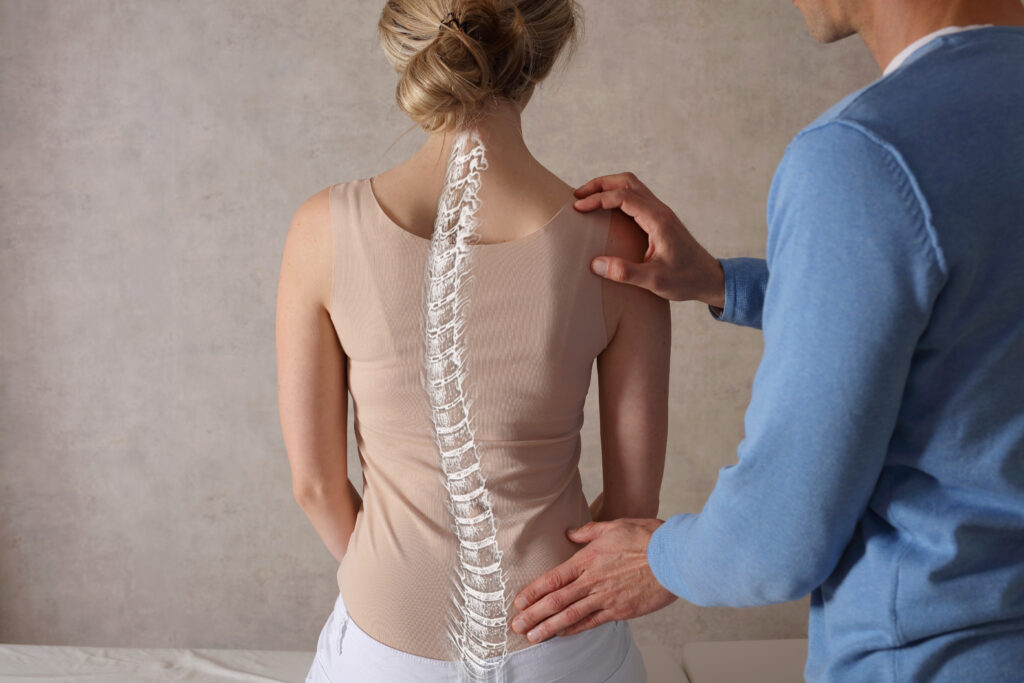
Scoliosis is the presence of an abnormal curvature of the spine. Scoliosis may affect the cervical (upper), thoracic (middle) and lumbar (lower) regions of the spine. The curves, which veer to the left or right, often present in an S- or C-shape. These curvatures may be categorized as non-structural — meaning the curve is temporary and the spine is structurally normal — or structural, meaning that the spine has a fixed curve.

The cause of scoliosis may result from a birth defect, neuromuscular disorder, injury or infection of the spine. Adult-onset scoliosis is rare — most adults develop scoliosis symptoms during their childhood or teenage years, then are likely diagnosed later in life. Scoliosis may also cause several other spine conditions, such as spinal stenosis (the abnormal narrowing of the spine) and foraminal stenosis (a narrowing of the open spaces in the lumbar spine).
What are the types of scoliosis?
Congenital scoliosis — This form of scoliosis refers to the abnormal development of the spine in the womb. Spinal bones that become fused together or do not properly form during gestation lead to congenital scoliosis. This type of scoliosis may affect one or all levels of the spine. Because congenital scoliosis symptoms can appear in any level of the spine, it has a wide range of severity.
Neuromuscular scoliosis — This type of scoliosis is caused by a neurological or muscular disease, such as muscular dystrophy or cerebral palsy. The severity of neuromuscular scoliosis varies due to the unpredictability of treatment options and causes.
What symptoms are associated with scoliosis?
Scoliosis may result in the discomfort caused by associated spinal conditions that have developed. For instance, scoliosis tends to place an increased amount of pressure on the discs and facet joints of the spine, which can cause them to degenerate at an accelerated pace. Spinal stenosis, spinal arthritis, degenerative disc disease and pinched nerves are common conditions for someone with scoliosis to develop over the course of his or her life.
Symptoms can include:
What treatments are available for scoliosis?
There are several treatment options for a scoliosis patient whose spine exhibits a lateral S- or C-shaped curve. While causes for some cases of scoliosis remain undetermined, the condition is believed to result from birth defects, neuromuscular disorders or the natural degeneration that affects the spine over time. Common indicators include neck or back pain, uneven shoulders, uneven waistline, one hip that is higher than the other and one prominent shoulder blade.
Spinal curvature can also potentially cause compression of the spinal cord or nerve roots, in which case pain, numbness, tingling and muscle weakness may affect the upper or lower extremities. Treatment for these symptoms will largely be based on a patient’s age, the severity of the curve, the severity of symptoms and other factors.
Most treatment options aim at relieving any discomfort and reducing the risk for curvature progression. Not all patients diagnosed with scoliosis will require treatment, but for those who do, a doctor may first recommend several nonsurgical options, such as:
It is important to work closely with your doctor to find the right combination of treatments for you. It may take some trial and error and patience to develop an effective personalized plan. Many patients also explore alternative methods such as acupuncture and herbal remedies as part of a comprehensive scoliosis treatment program.
Will surgery be necessary to treat my scoliosis?
Depending on the cause, severity of the curvature and related symptoms, surgery for scoliosis may be recommended in certain situations. For years, a patient’s only surgical option used to be traditional open spine surgery, a highly invasive procedure requiring a large incision, muscle disruption and an overnight hospital stay. As an alternative, Total Spine & Orthopedics performs minimally invasive spine surgery for adult patients dealing with degenerative scoliosis.
If a scoliosis condition is affecting your quality of life, contact us for your no-cost MRI review.

Melbourne: 709 S Harbor City Blvd, Ste 110, Melbourne, FL 32901
Orlando: 9145 Narcoossee Rd, Ste A200, Orlando FL 32827
Titusville: 494 N Washington Ave, Titusville, FL 32796
Our Hours: Monday - Friday 8:00 AM to 5:00 PM
Copyright © Total Spine and Orthopedics - Icons From FlatIcon